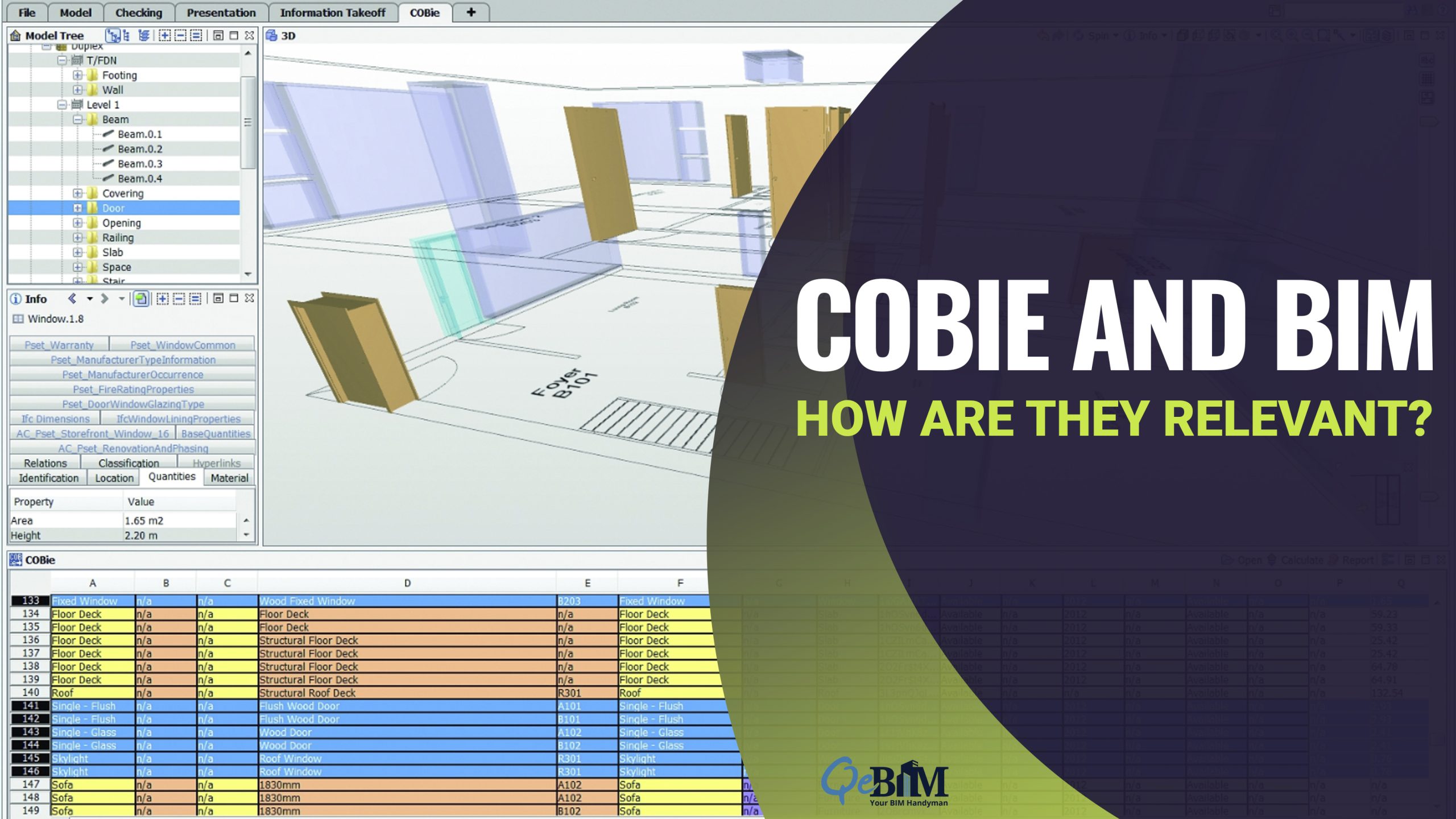COBie and BIM: How are They Relevant?

Introduction
In the realm of construction and building management, effective communication and data exchange is paramount. That’s where COBie (Construction Operations Building Information Exchange) comes into play. COBie is a standardized data format that facilitates seamless information exchange within the Building Information Modeling (BIM) framework. This blog will explain COBie and how it interrelates with BIM, showcasing its benefits in enhancing collaboration, accuracy, and efficiency in construction projects.
What is COBie?
COBie, shorted for Construction Operations Building Information Exchange, is not a software or tool but rather a structured data schema. It defines the requirements for information exchange within a BIM environment. COBie provides a standardized format to capture and communicate information about a building project, typically in a spreadsheet such as Microsoft Excel. It aims to enable efficient data sharing and integration between different stakeholders, software applications, and phases of a construction project, from planning to design to implementation to operation and maintenance.
The Relationship between COBie and BIM
BIM acronym for Building Information Modeling is a digital representation of a building’s physical and functional characteristics. It encompasses geometric data, spatial relationships, and other relevant information. COBie serves as a complementary component of BIM, focusing on the non-graphical data associated with a building project. While BIM primarily deals with design and geometric aspects, COBie extends the model by capturing facility management and operations information.
COBie enhances BIM by enabling the exchange of comprehensive and accurate non-graphical data. It defines specific attributes and formats for elements such as equipment, maintenance schedules, warranty information, and asset management details. By incorporating COBie, BIM becomes a more holistic platform that not only aids in design and construction but also supports the long-term management and maintenance of a building.
Benefits of COBie in BIM
1) Improved Collaboration:
COBie fosters collaboration between project stakeholders, including architects, engineers, contractors, and facility managers. COBie enables seamless communication and collaboration throughout the project lifecycle by providing a standardized data exchange format. This improves coordination, reduces errors, and facilitates better decision-making.
2) Enhanced Data Accuracy and Completeness:
COBie establishes precise information requirements and standards, ensuring that data is accurate and complete. The structured format of COBie, with predefined fields and attributes, reduces the risk of errors and discrepancies in the exchanged information. This contributes to more reliable and consistent data across the project.
3) Data Interoperability and Integration:
COBie supports data interoperability by allowing easy mapping and conversion to other formats. This allows fluent integration with various other systems, such as computer-aided facility management (CAFM) or enterprise asset management (EAM) software. The seamless integration of BIM data with other systems enhances overall lifecycle management, from design and construction to operation and maintenance.
4) Seamless Transition from Construction to Facility Management:
COBie facilitates the smooth transition of information from the construction phase to the facility management phase. It captures and delivers essential data required for ongoing operations and maintenance. This ensures that valuable information generated during the design and construction phases is effectively handed over to the facility management team, avoiding data loss and improving efficiency.
5) Improved Efficiency and Cost Savings:
COBie, within the BIM framework, streamlines processes, reduces rework and enhances efficiency. By providing accurate and comprehensive information, COBie minimizes errors and miscommunication, resulting in cost savings and improved project timelines. The availability of up-to-date information facilitates better maintenance planning and reduces downtime, further enhancing efficiency and cost-effectiveness.
COBie: Streamlining Data Exchange in BIM for Collaboration and Construction Efficiency
COBie plays a vital role in enhancing collaboration, accuracy, and efficiency within the BIM environment. It enables seamless data exchange, improves stakeholder coordination, and supports facility management throughout the building’s lifecycle with accurate As-built BIM Services. By adopting COBie and an apt BIM Service Provider, construction professionals can harness the full potential of BIM, resulting in better-informed decision-making and successful project outcomes.